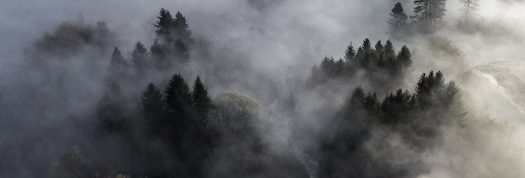A consistent part of root zone and surface water evaporates and returns to the atmosphere to eventually form clouds and precipitation again. The process follows quite complicate routes and is different when happening from liquid surfaces, soil or vegetation (and BTW animals). In this group of lectures we try to figure out the physical mechanisms that act in the process and give some hint on methods to estimate evaporation and transpiration with physically based models.
 |
| Courtesy of Luca Chisté (http://www.lucachiste.it/) |
- The generation of Water vapor (Vimeo2022)
- Turbulent transport of vapor (and other quantities): the Daltonian law (Vimeo2022)
- Textbook: M. Bottazzi (cap. 2.2)
- Evaporation as energy flux (Vimeo2022)
- Textbook: M. Bottazzi (chap. 2.3)
- Evaporation is water limited or energy limited (Budyko approach) (Vimeo2022)
- Textbook: M. Bottazzi (chap. 2.1.0)
- Evaporation form soils (Vimeo2022)
- Textbook: M. Bottazzi (chap. 2.4.1-2.4.3)
- Transpiration (Vimeo2022)
- Plants physiology and resistances to transpiration (supplemental material)
- Textbook M. Bottazzi (chap. 3.0-3.3)
- The derivation of the generalized PM equation (Vimeo2022)
- Textbook: M. Bottazzi (cap. 2.3.2-2.3.5)
No comments:
Post a Comment